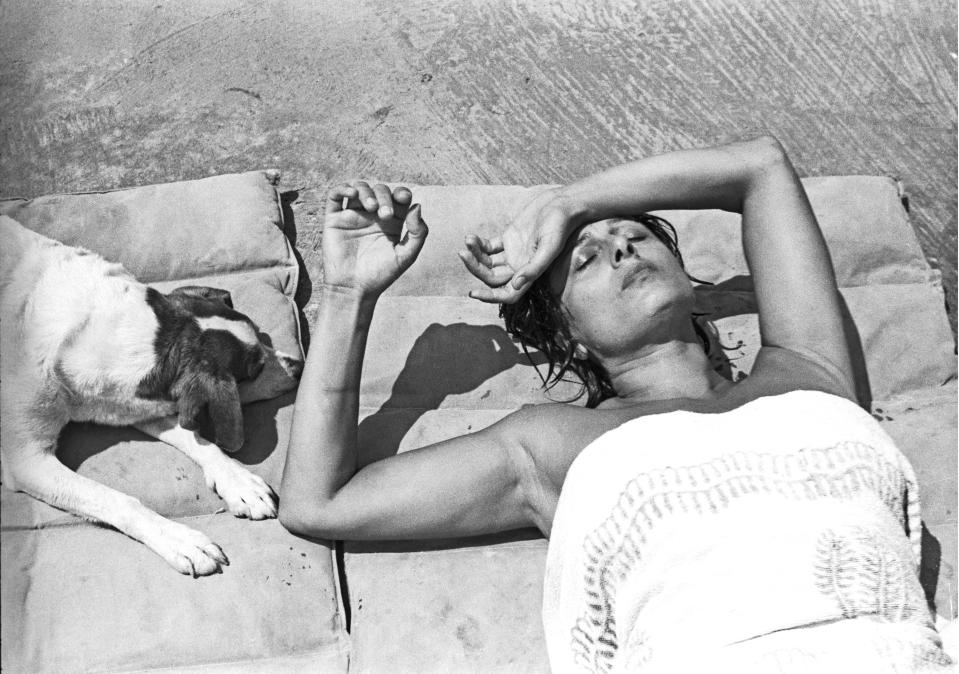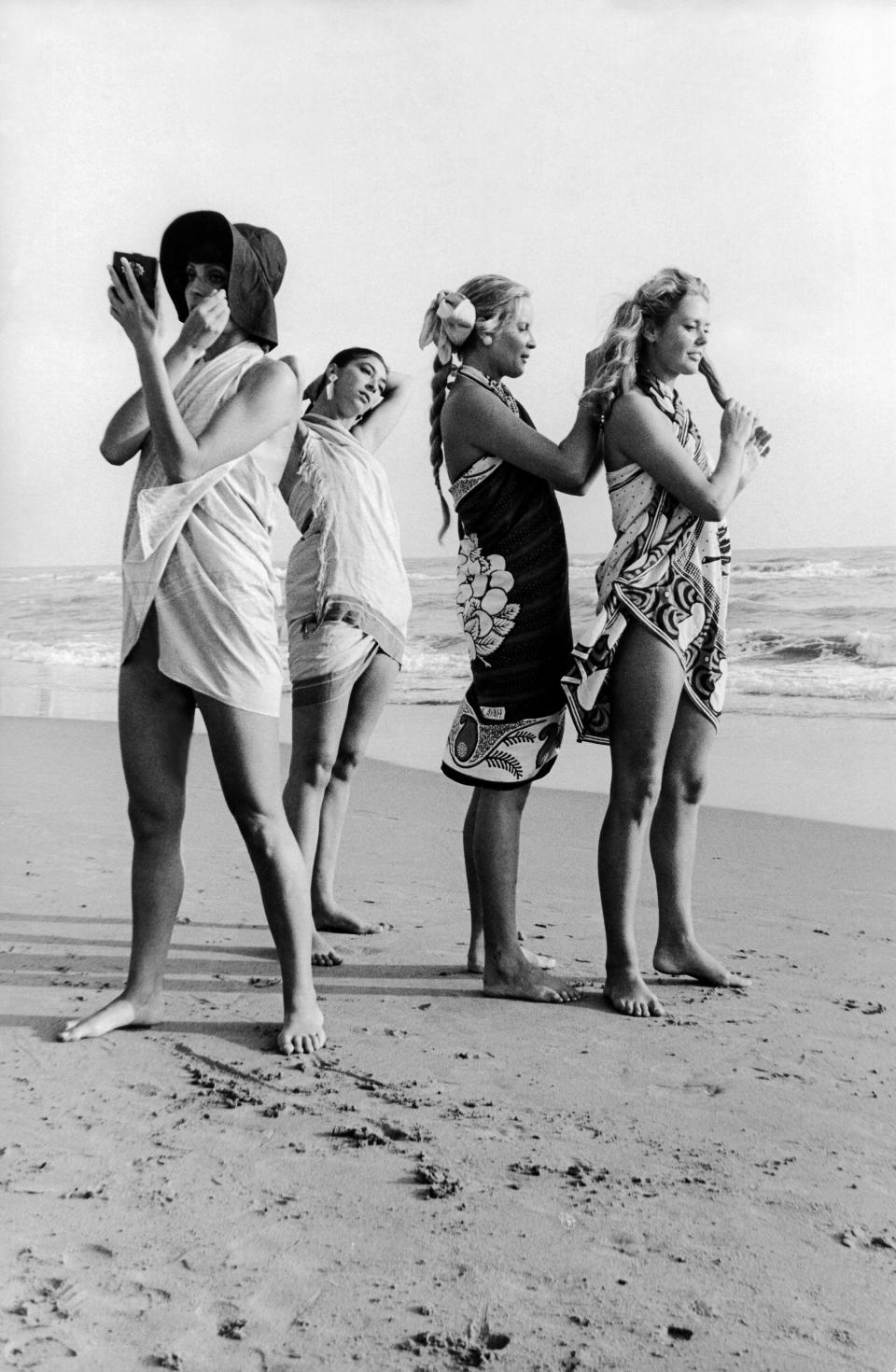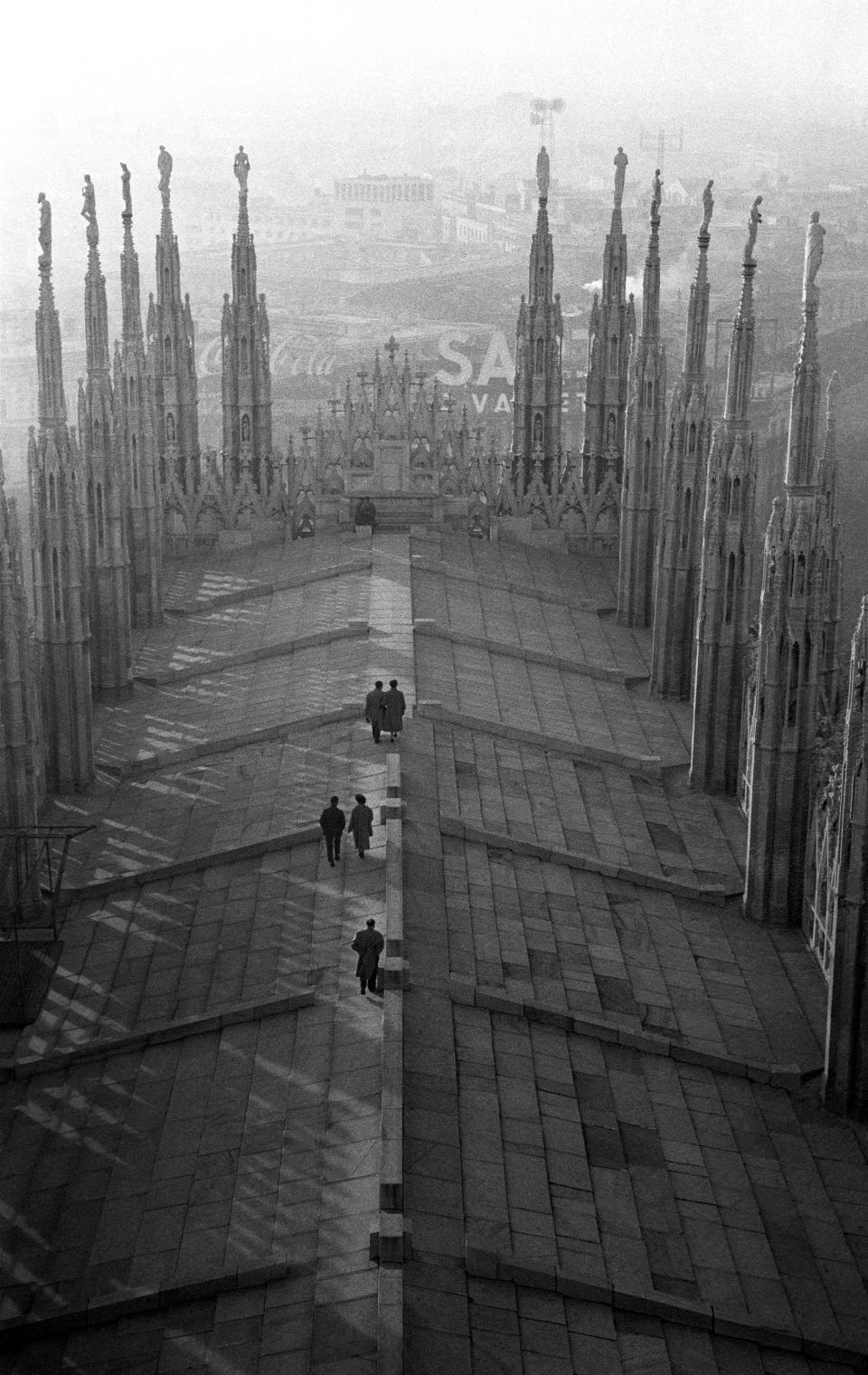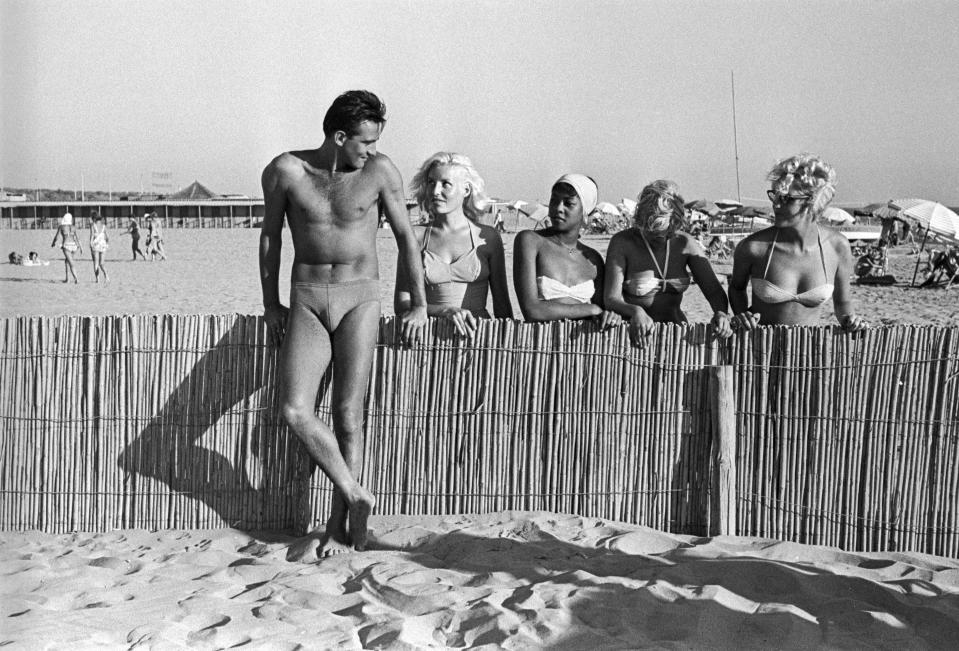Italian Photographer Paolo Di Paolo Dies at 98
- Oops!Something went wrong.Please try again later.
- Oops!Something went wrong.Please try again later.
- Oops!Something went wrong.Please try again later.
- Oops!Something went wrong.Please try again later.

MILAN — The well-respected Italian photographer Paolo Di Paolo died Monday at age 98 in his hometown of Larino, in the country’s central region of Molise.
His daughter Silvia confirmed that he “has arrived at the end of his extraordinary life and left us this morning.” Further details on the cause of death were not disclosed.
More from WWD
The municipality of Larino shared a commemorative message on Facebook defining him as a “maestro,” an illustrious citizen of the town and “a precious part of the history of Italian photography.” The statement read that a farewell function will be hosted Tuesday morning at the city’s San Francesco church.
Born in 1925, Di Paolo moved to Rome at an early age and soon became one of the greatest reportage photographers, who documented the country as it emerged from World War II for the now-defunct Il Mondo weekly magazine, as well as collaborating with other outlets and working on personal projects.
Using his compact Leica III C camera, Di Paolo also captured black-and-white portraits of key personalities in the country’s art, culture and especially movie sectors, including Brigitte Bardot, Federico Fellini, Sophia Loren and Marcello Mastroianni, to name a few. Some of his most famous images included Italian poet and film director Pier Paolo Pasolini portrayed on the outskirts of Rome; the encounter between actress Gina Lollobrigida and artist Giorgio de Chirico, and Anna Magnani sunbathing in her villa outside Rome.

For his contribution to photography, Di Paolo most recently received an honorary doctorate in art history from the Sapienza University of Rome, coinciding with his 98th birthday last month.
His life also became the subject of a documentary directed by Bruce Weber, who first came across Di Paolo’s work by chance during a visit to Rome. Titled “The Treasure of His Youth: the Photographs of Paolo Di Paolo,” the film premiered at the Rome Film Festival in October 2021. A screening in New York was staged last year with guests including Isabella Rossellini, Alec Baldwin, Grace Coddington, Tina Kunakey, and Allegra Versace, among others.
Recalling Monday how he was “lucky enough to make a film about the world of di Paolo,” Weber noted how the photographer “traveled around Italy with Pasolini, documenting the changes after the fascist regime. His photographs became synonymous with neorealism in films by Roberto Rossellini, Vittorio De Sica, and Federico Fellini,” Weber said.
After introducing di Paolo (who was then 96) to the photographer Tony Vaccaro (who was then 97), Weber said the men made a plan to get together “next summer” with their Leicas. “Paolo taught me that it’s good to think that way — there’s always a great expectation when you have a camera in your hand,” Weber said.
A friend of Vaccaro’s wrote to Weber that she thought they were “up in heaven swapping stories about growing up Italian.” “I fall in love with Italy every time I see one of Paolo’s pictures. So I drink a toast as I hope these two men are looking down on us and laughing,” Weber said.
In addition to his reportage work, Di Paolo had fashion-related stints. Before retiring to the countryside outside Rome in 1968, he concluded his photographic career by collaborating with journalist Irene Brin on exclusive fashion reports about the international jet set.
In particular, in 1967 he documented the Valentino haute couture show in Capri, an experience he replicated a few years ago. To wit, in 2020 the fashion house’s creative director Pierpaolo Piccioli invited Di Paolo to Paris for the brand’s couture spring 2020 show, with the photographer joining in the behind-the-scenes process, too.
Memories of that tie-up were shared on Monday by Piccioli on Instagram, flanked by a simple caption reading “Ciao Paolo Di Paolo” and heart-shaped emojis. Piccioli already chose the social network to share glimpses of the experience at that time, with posts ranging from the whole Valentino team photographed by Di Paolo to the look inspired by the 1967 collection.
“Paolo Di Paolo was a gentle man whose inner elegance I will always remember with admiration. He was an artist, an observer, and a kind-at-heart person who had worked with great personalities never betraying his values and love for life,” Piccioli said to WWD on Monday.
“He had a disruptive personality too, and a surprisingly punk attitude,” continued the designer. “Once, at 94, he came to one of my haute couture shows. He wanted to take a picture of an archive coral hat so bad that he climbed up a ladder without any hesitation. He shot that coral hat with a smile on his face, it was his own amusement, his own moment of grace. His pictures captured human frailty behind glamour, the magic of an era, and mostly: the truth. We will miss his smile, but never forget his lesson.”
In an interview with WWD in 2021, Di Paolo also offered a glimpse of the moments shared with Piccioli. “That was for fun. I took the camera with me in case it turned out to be useful,” said the photographer. “I did it also because of Pierpaolo [Piccioli], who is a dear friend. Then, at a certain moment there was a model trying a dress and a headgear that was made of corals that looked like one I photographed in 1967. It was so beautiful,” he added.
“So when they were doing the fittings, an image came to my mind and I said, ‘Everybody stops’ and there was this staircase, so I checked the light there. They were probably thinking, ‘Now this 95-year-old man [gets hurt]’ but I regained so much energy in that moment.…I still know how to take pictures, you know. I still like to take pictures, but just for fun now,” he said at the time.

The collaboration with Valentino was part of a momentum that brought fresh attention to Di Paolo’s work in recent years. In fact, the photographer quit the profession roughly 60 years ago “when the atmosphere changed in Italy, and all people wanted were scandals,” he said in 2021, referencing how, with the advent of television and paparazzi, information increasingly pivoted toward news and gossip scoops.
“For me photography had to be informative, narrative. You might not know the subject but you understand the situation. In every image there’s a story to tell, even if it’s a static one. That was my law,” he offered.
Di Paolo’s photographic archives with more than 250,000 negatives, contact sheets, prints and slides, remained hidden for decades until his daughter found them by chance in the early 2000s and brought them back to light, gradually reviving the public’s interest in his work.
In 2019, Rome’s MAXXI museum, the Museum of the Arts for the 21st Century, dedicated an extensive retrospective to the photographer, titled “Mondo Perduto,” or “Lost World.” As reported, back then Gucci teamed with the museum on the publication of the exhibition book, which gathered more than 300 photos taken between 1954 and 1968.

The show was followed by two other exhibitions staged in 2021 at Galleria Carla Sozzani, at the 10 Corso Como location in Milan. Both curated by Di Paolo’s daughter, one was titled “Milano (fotografie 1956-1962)” and presented a selection of images celebrating the city and shedding a poetic light on Milanese landmarks in the ’60s. The other was dubbed ““La Lunga Strada Di Sabbia,” or “The Long Road of Sand,” and displayed 101 images — several unpublished — flanked by text by Pasolini.
The exhibit referenced an editorial work Di Paolo and Pasolini developed in 1959. Published by the Successo magazine in three issues, it reported on Italians on vacation, anticipating Italy’s rebirth in the 1960s.
At the time, Pasolini was not a film director yet but had published “The Best of Youth,” “The Street Kids” and “A Violent Life.” The two didn’t know each other and made for a delicate partnership on the assignment. For example, after setting off together with the plan of traveling along the coasts of Italy, they had different visions.

“Pasolini was looking for a lost world of literary ghosts, an Italy that no longer existed,” recalled Di Paolo at the show opening. “I was looking for an Italy that looked to the future. I conceived the title meaning the strenuous road traveled by Italians to reach well-being and holidays after the war.”
That first experience ended up in mutual respect and trust, with Di Paolo identifying his favorite image with the black-and-white photograph portraying Pasolini himself in a city’s outskirts.
On Monday, Fondazione Sozzani took to Instagram to pay tribute to the photographer, sharing a message that read: “Fondazione Sozzani is deeply sad to hear about the passing of Paolo Di Paolo and wishes to remember the great contribution he gave to the history of Italian photography. During “La Lunga Strada Di Sabbia,” which we hosted in 2021, a strong and kind friendship was born between the Fondazione and Paolo Di Paolo and his daughter Silvia Di Paolo, who curated the exhibition. Our deepest sympathy goes out to her and all his family at this difficult time.”
Best of WWD

